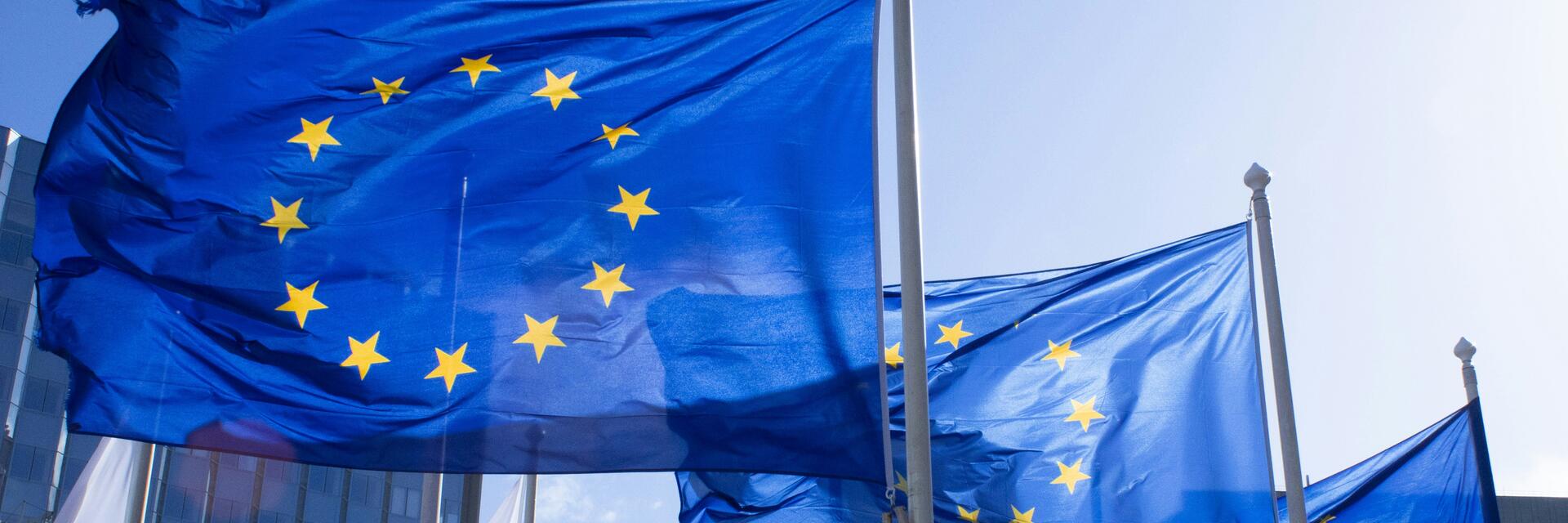Charged for change: How the EU battery regulation is transforming the energy landscape

By Kemal Obad, Policy Analyst
In the dynamic landscape of energy policy, one area that has gained significant traction in recent years is regulation surrounding batteries. As the world increasingly transitions towards renewable energy sources and electric mobility, the demand for batteries has surged, prompting regulatory bodies to establish frameworks to ensure safety, sustainability, and efficiency.
The European Union (EU) has introduced a comprehensive battery regulation, known as Regulation (EU) 2023/1542, aimed at ensuring a greener future by addressing the entire life cycle of batteries. This regulation sets the groundwork for a more sustainable and resilient energy future.
Sustainability and safety
The regulation prioritizes environmental sustainability throughout the battery life cycle, including provisions for reducing the environmental impact of production, promoting the use of recycled materials, and establishing eco-design requirements to optimize energy efficiency. It also ensures that batteries have a low-carbon footprint, use minimal harmful substances, and require fewer raw materials from non-EU countries. Additionally, the regulation mandates that batteries are collected, reused, and recycled to a high degree within Europe, promoting a circular economy.
Performance standards
The regulation sets stringent standards for battery capacity, durability, and charging efficiency to ensure the performance and reliability of batteries. By adhering to these standards, manufacturers can enhance the quality and longevity of batteries, improving overall energy efficiency and user experience.
Recycling requirements
The regulation mandates the establishment of robust recycling infrastructure and targets for recovering valuable materials from used batteries. Manufacturers are required to design batteries with recyclability in mind, facilitating the recycling process and reducing waste. Targets for recycling efficiency, material recovery, and recycled content will be introduced gradually from 2025 onwards.
Safety measures
Safety is paramount in the design, production, and use of batteries. The regulation sets forth stringent safety standards to prevent accidents, fires, and other hazards associated with battery malfunction. This includes requirements for thermal management, overcharge protection, and safe handling procedures throughout the battery life cycle.
Types of batteries covered
The regulation encompasses a wide range of battery types, including lithium-ion batteries, lead-acid batteries, nickel-cadmium batteries, and emerging technologies such as solid-state batteries and flow batteries. Each type of battery is subject to specific requirements and standards tailored to its characteristics and intended use.
Implementation timeline
The EU Battery Regulation was published on July 28, 2023, and entered into force on August 17, 2023. The regulation will be implemented in phases, with different requirements coming into effect on various dates.
Commencing in 2025, new regulations will enforce declaration requirements, performance standards, and carbon footprint limits for electric vehicles, light transport, and industrial batteries. Simultaneously, targets for recycling efficiency and material recovery, particularly for critical materials like cobalt, lithium, and nickel, will be phased in. All waste batteries must be recycled to achieve high recovery rates.
Timeline overview:
- August 17, 2023: Official enforcement of Battery Regulation 2023/1542
- February 18, 2024: Mandatory enforcement of Battery Regulation 2023/1542
- August 18, 2024: Mandatory enforcement of safety requirements for stationary battery energy storage systems, performance, and durability requirements for rechargeable industrial batteries with a capacity greater than 2kWh, LMT batteries and electric vehicle batteries, conformity assessment procedures, and economic operator obligations
- February 18, 2025: Mandatory enforcement of carbon footprint requirements for electric vehicle batteries
- August 18, 2025: Mandatory enforcement of supply chain due diligence/mandatory enforcement of waste battery management
- February 18, 2026: Mandatory enforcement of carbon footprint requirements for rechargeable industrial batteries
- February 18, 2027: Mandatory enforcement of battery passports for rechargeable industrial batteries larger than 2kWh and electric vehicle batteries
- August 18, 2028: Mandatory enforcement of requirements for recycled materials іn rechargeable industrial batteries with greater capacity except those with exclusively external storage, electric vehicle batteries, and SLI batteries, conformity assessment procedures, and economic operator obligations
Impact on manufacturers
The new EU Battery Regulation will have a significant impact on battery manufacturers, requiring them to adapt their processes and products to meet the new requirements:
- Carbon footprint declaration
- Recycled content requirements
- Performance and durability requirements
- Removability and replaceability obligations
- Labels with information on capacity and duration of use, etc.
Manufacturers will need to ensure that their batteries comply with the regulation's requirements for various battery categories, including:
- Portable batteries
- Electric vehicle (EV) batteries
- Industrial batteries, with a sub-category for stationary battery energy storage systems
- Light means of transport (LMT) batteries
- Starting, lighting, and ignition (SLI) batteries
The regulation aims to promote sustainability, responsible sourcing, and efficient recycling throughout the battery lifecycle.
Manufacturers will need to adapt their practices to meet these goals, which include:
- Sustainability: Seeks to ensure the sustainable design and production of batteries by introducing requirements for their performance, durability, and labeling, including QR codes and a battery passport
- Recycling: Aims to reinforce the recycling and collection of batteries by establishing higher recycling targets and implements an efficient take-back system for waste batteries
- Responsible sourcing: Promotes the responsible sourcing of raw materials used in batteries
As the demand for batteries continues to grow, the EU Battery Regulation will play a crucial role in shaping the industry and ensuring a sustainable future. Manufacturers will need to adapt quickly to meet the new requirements and stay competitive in the market.
By addressing every stage of the battery life cycle - from sourcing and manufacturing to use and recycling, - the new framework sets a new standard for battery regulations worldwide. The regulation ensures that batteries have a low-carbon footprint, use minimal harmful substances, and require fewer raw materials from non-EU countries. It also promotes a circular economy by mandating the collection, reuse, and recycling of batteries within Europe. As we move towards a greener future, regulations like these will play a crucial role in shaping our energy sector.
